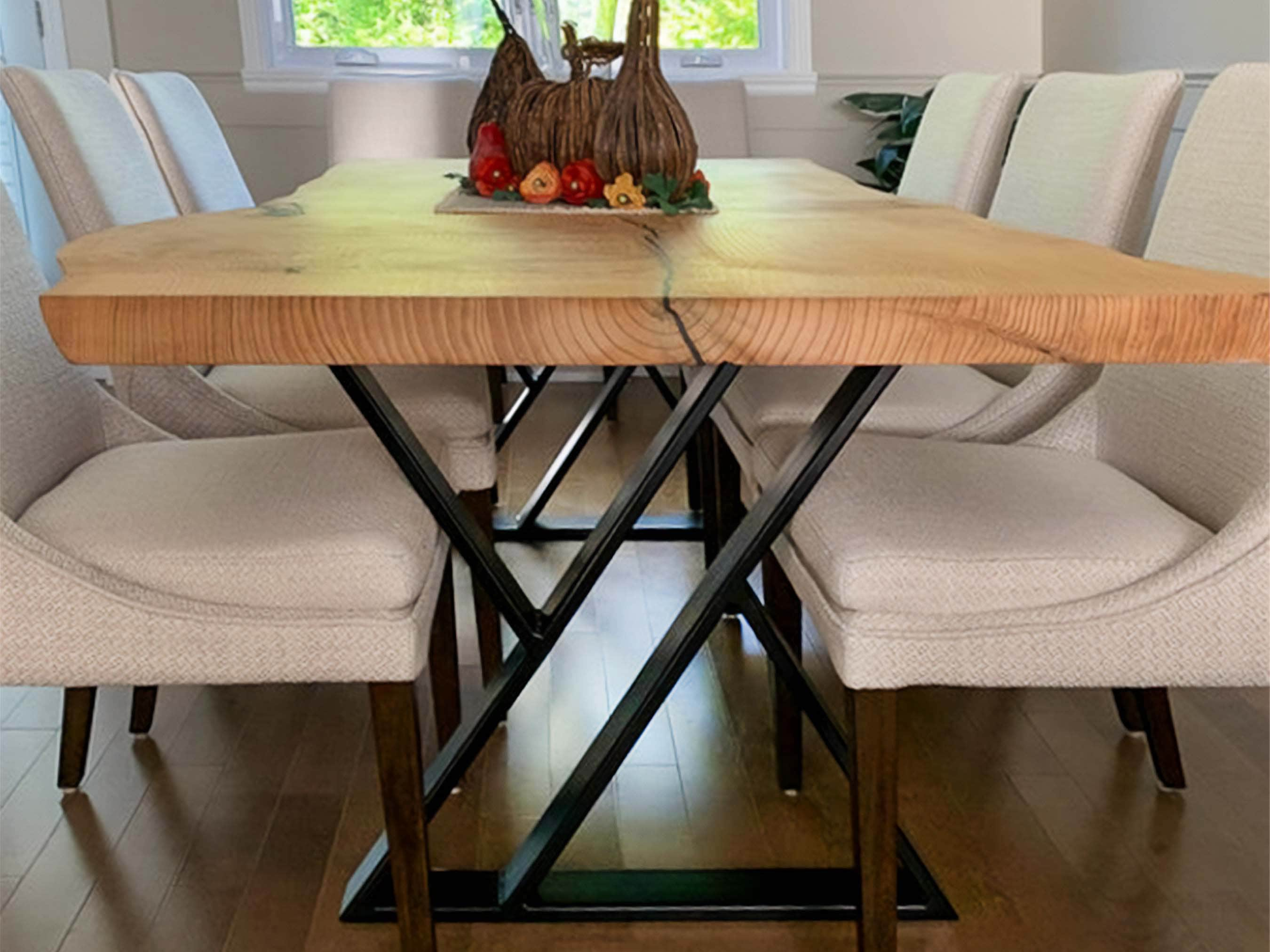Dining Room Table Legs That Incorporate Capability and Modern Layout
Dining Room Table Legs That Incorporate Capability and Modern Layout
Blog Article
An In-depth Take A Look At Table Leg Styles: Discovering the Suitable Suit
Selecting the appropriate table leg style is vital for both visual charm and useful functionality. Traditional 4 legs provide timeless style and security, while the pedestal base gives enhanced legroom and a modern appearance. For those with larger tables, trestle legs make certain strong support, whereas barrette legs introduce a mid-century modern-day vibe with their minimal style. The x-shaped legs mix modern design with improved security. Each of these options brings unique benefits, making the selection extra than simply an issue of choice. Check out better to find which design perfectly matches your dining space and way of life.
Standard 4 Legs
Among the numerous kinds of dining table leg styles, the traditional four-leg style continues to be an ageless choice for numerous families. This traditional arrangement supplies an unified mix of functionality and looks, making it a seasonal fave. 4 legs offer well balanced assistance, making sure the table stays stable and with the ability of birthing substantial weight. This is specifically beneficial for houses that frequently organize big gatherings or utilize their table for several objectives, such as work or crafting.
From an aesthetic perspective, the standard four-leg style can be quickly adapted to numerous indoor styles. Whether crafted from wood, steel, or a mix of materials, these legs can be intricately sculpted, smooth and minimalistic, or anything in between. Their flexibility allows them to enhance both rustic and modern settings flawlessly.
Furthermore, the straightforward structure of the four-leg style helps with simplicity of movement and placement within an area. Unlike even more complicated bases, this design lessens blockages, offering sufficient legroom for diners. In summary, the traditional four-leg table leg style weds enduring beauty with sensible capability, making it an astute option for those looking for both form and feature in their dining furnishings.
Stand Base
Often celebrated for its elegant and space-efficient design, the stand base is a recognized choice to the standard four-leg arrangement in eating table leg styles. Without edge legs, restaurants are paid for greater freedom of motion, making it an excellent option for round and oval tables that advertise more intimate and comprehensive events.
The central column itself provides a canvas for intricate designs and imaginative expressions, including a component of visual passion beneath the table. In recap, the pedestal base integrates performance with design, making it an improved and practical option for varied eating settings.
Trestle Legs
Trestle legs provide a robust and ageless structure for dining tables, defined by their straight cross-bracing and strong support light beams. Stemming from medieval times, this design has actually evolved yet kept its crucial structure, making it a seasonal fave in both typical and contemporary setups. The central trestle light beam, commonly supported by 2 or even more vertical messages, supplies outstanding security, permitting for bigger table lengths without the requirement for extra legs.
A considerable benefit of trestle leg tables is the sufficient legroom they provide. Unlike tables with 4 corner legs, the absence of blockages at the table's sides provides unblocked area for chairs and diners, boosting convenience and availability. This makes trestle tables perfect for accommodating larger celebrations, whether in a dining area or a banquet hall.
The visual convenience of trestle legs is significant. Readily available in a variety of products such as wood, metal, and composite, they can be completed to enhance a wide variety of interior styles. From rustic farmhouse to sleek modern styles, trestle legs can be tailored to fit specific preferences. Their enduring charm and functional advantages make trestle legs an engaging selection for those seeking both design and functionality in their dining table.
Barrette Legs

The allure of barrette legs lies in their simpleness and versatility - dining room table legs. Offered in a series of products, consisting of steel and brass, they can be finished in various shades to enhance different interior designs. Whether coupled with a rustic wooden tabletop or a modern glass surface area, barrette legs easily mix functionality with a touch of vintage appeal
Longevity is another noteworthy function of barrette legs. In spite of their fragile look, these legs are crafted to birth substantial weight, guaranteeing the dining table stays stable blog here and safe. In addition, they are reasonably very easy to mount, making them a popular choice for DIY enthusiasts and expert furniture makers alike.
X-Shaped Legs
Built from products such as steel, wood, or a combination of both, X-shaped legs can be customized to match various style choices. Steel legs frequently offer a sleek and industrial feeling, perfect for loft-style apartments and contemporary dining spaces. On the various other hand, wood X-shaped legs use a warmer, more rustic allure, suitable for farmhouse or diverse insides. The flexibility in materials enables property owners to personalize their dining tables to much better fit their total layout scheme.
In addition, the engineering behind X-shaped legs makes sure even weight distribution, reducing the danger of tottering and boosting longevity. This makes them particularly well-suited for larger table that need extra support. Basically, X-shaped legs blend useful visit site engineering with modern looks, making them an ageless option for diverse dining environments.
Conclusion
An extensive understanding of eating table leg styles reveals the distinctive attributes and advantages of each layout. Trestle legs make certain robust assistance for bigger tables, and hairpin legs present a mid-century modern-day visual.
Report this page